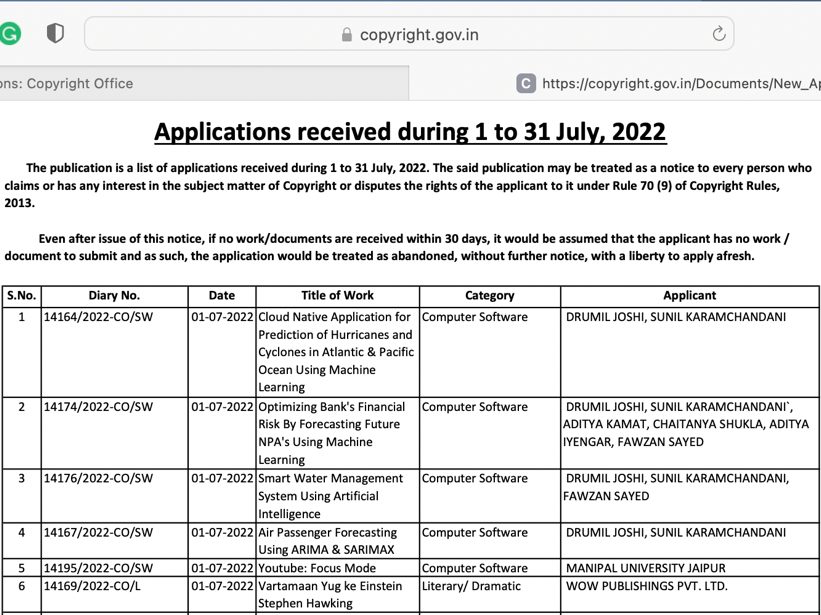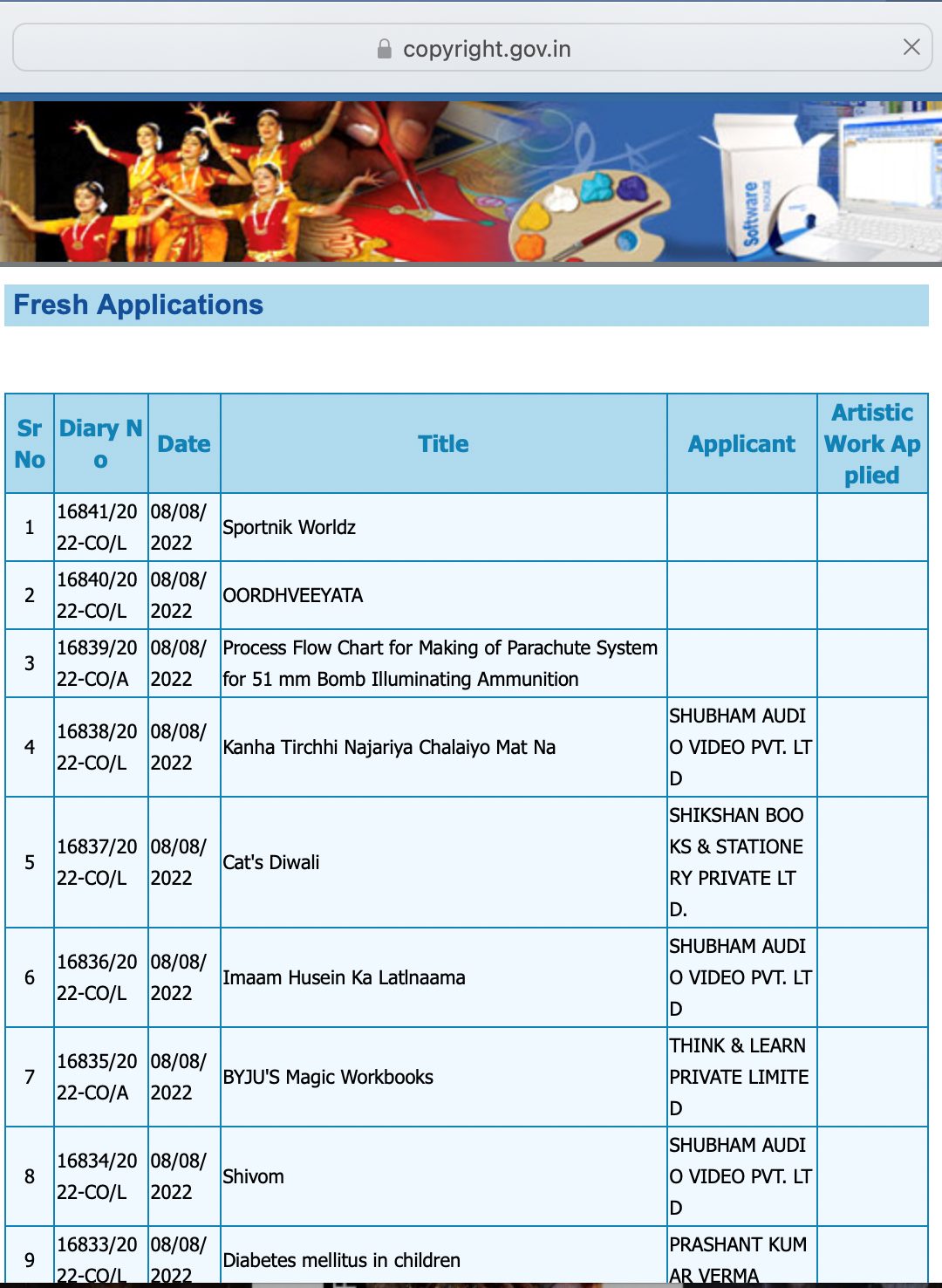Copyright refers to the exclusive right provided by law to the creators of literary, dramatic, musical and artistic works and producers of cinematograph films and sound recordings. It is a bundle of rights including, inter alia, rights of reproduction, communication to the public, adaption and translation of the work. Copyright essentially protects the various forms of expression. These rights are assigned to an individual when the registration of the copyright is approved by the copyright office. The filing procedure of copyrights has a workflow of its own and is certainly complex in nature. There are various steps to the registration of a copyright and one of the ambiguous and not-so-known steps is finding the new applications of copyrights for the filing of an objection by the third party. This is will be discussed in the given article.
Finding the new applications for the filing of Third-Party Objections
Although copyright is automatically acquired and there is no formality required. Although to obtain the certificate of registration from the copyright office one has to go through a set procedure. The certificate is vital as it is prima facie evidence of the ownership of such rights. To register the copyright successfully, the applicant must log into the Government of India’s Copyright Office website and subsequently Form IV on the website has to be filled by paying the specified fee of registration via demand draft or online mode of payment. After the payment is done, the applicant receives an Issue diary number. This starts the onset of the 30-day mandatory waiting period where an objection can be filed by a third party. Now the question arises that where to look for fresh applications of copyrights and raise an objection under the 30-day mandatory window?
To raise an objection against a particular fresh application, the third party has to visit the official website of the Copyright Office in India, cited below. On the website, one has to visit the tab named ‘New Applications’ which is bifurcated into two choices i.e. ‘Fresh applications’ and ‘Monthly Applications’. Both these options have their own relevance on the basis of the information which is to be sought for by the third party for filing of the objections.
The Fresh Applications tab displays the following information in tabular form –
- Serial no. of the application
- Diary no. of the application
- Date of filing of the application
- Title of the work, and
- Applicant Information.
The Monthly Applications tab displays the month wise applicant information in the form of digitally accessible and downloadable PDF files, chronologically displaying the given information in tabular form –
- Serial number of the applications.
- Diary no. of the applications.
- Date of filing
- Title of the work
- Category of the work, and
- Applicant Information
Above-mentioned information is thus used to file an application to the Registrar of copyrights regarding the objections to be raised by the third party. These help in knowing of the vital information regarding this very context. There is ample difference between the amount of information provided in the ‘Fresh Applications’ which are updated on a daily basis and the ‘Monthly Application PDFs’ that have the information in a more descriptive manner. The PDFs help third party to expressly know and find what the technicalities are. For eg. under which category of work does the specific, talked upon application falls in? It also is in the form of PDFs which has great utility as it is downloadable and can be accessed offline.
[Picture Source: Office of Copyright, India]
Conclusion
On the outside, the procedure looks accessible and routine to complete, but there is a fallacy in the same. As important is the filing of the objection application by the third party, it is equally important to describe very specifically the place where to look for these new applications being filed. Said to be in the public domain, these are far from the knowledge of the interested third party. It is saddening to see as the Initial step of filing is not described peculiarly and expressly.
Neither the Act[1] nor the Rules[2] have specified the know-how of the newly filed applications and haven’t even mentioned the place where to find them. The act and the rules have ambiguity in this particular aspect.
Also, the ‘Monthly Applications’ are uploaded month-wise in PDF format on the website. They are informative as they have more tiles of information provided descriptively, but at the same time aren’t updated and thus cause the third party to wait, which in-turn leads to untimely delay and unwanted distress. On the other hand, the ‘Fresh Applications’ are updated on a daily basis but are less informative missing even the critical aspect of ‘Category of work’ which in-turn forms the basis of the objection application to be filed to the registrar of Copyrights.
The Copyright Office of India should definitely analyse this aspect thoroughly and subsequently should make the necessary amends. A disclosure of some kind in the statues should be taken up by the authorities. This will, to full extent, cut down ambiguity in this particular aspect of filing third-party applications and will also ease the process a bit. The Copyright Office should consider the same and do the needful.
Author: Aniruddha Mishra (Intern), in case of any queries please contact/write back to us via email chhavi@khuranaandkhurana.com or at Khurana & Khurana, Advocates and IP Attorneys.
References:
[1] The Copyright Act, 1957.
[2] The Copyright Rules, 2013





